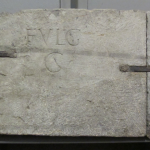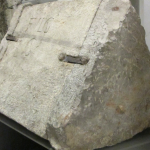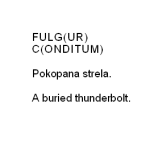Grave of lightning
Emona also had its fair share of fortune-tellers who interpreted the will of the gods to the townspeople. Known as the haruspex, the fortune-teller studied animal entrails and interpreted miraculous signs and lightning bolts, divining the future of the town as well as its individuals on the basis of the colour, shape and sound of lightning. When lightning struck a particular location nearby, Romans put a fence around it and staged a ritual burial for the lightning bolt. One of the objects left behind by this ritual practice is the grave of lightning discovered in Ljubljana in 1901. It consists of four sides that create the shape of a small house with a triangular roof. The Latin inscription on the front side tells us it marks the location of a buried lightning bolt.






